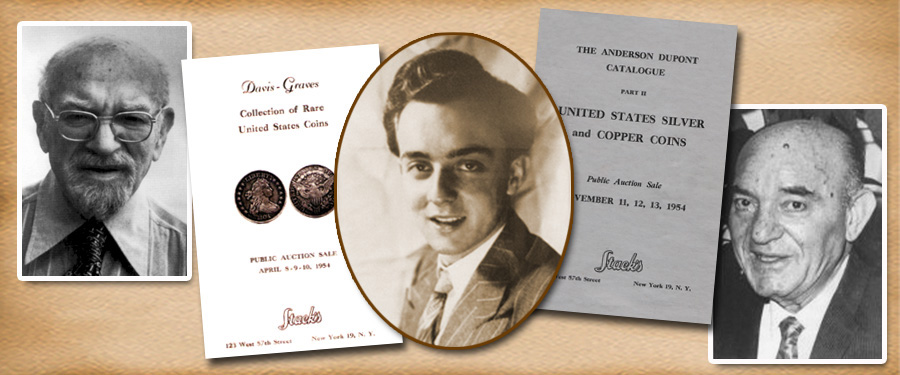
Harvey Stack Remembers: Part 58
The year 1972 continued some of the trends of earlier years in the hobby. Inflation entered our hobby in force and demand for coins exploded. The American Numismatic Association (ANA) got many new members, as did the Professional Numismatic Guild (PNG). Coin newspapers, especially the weekly editions, added many subscribers, and local clubs developed or expanded their membership.
The price of gold and silver kept advancing, even after President Nixon in 1971 raised the value of gold from $35 to $42 (a result of the inflationary happenings in investment markets). Of course the cost of living advanced as well. The government agencies involved with various market and economic conditions tried in vain to keep markets level. Many people who invested in commodities, the stock market and real estate, also looked for alternate places to invest.
Collecting coins was written about in newspapers and magazines, and, as noted, the number of subscribers to numismatic publications grew. People searched through change for coins made of silver for their metal value and many expanded this interest in investing in metal to collecting other coins. Some bought albums, like those sold by Whitman Publishing Company in order to see how many different dates and mints they could find. More and more collectors grew from beginners into more involved collectors and some became very advanced.
As often happened in a growing field, new buyers could easily be taken advantage of by those selling overgraded, polished, altered, misattributed, or counterfeit coins. The possibility of high profits meant that charlatans could outnumber the qualified dealers in the coin market. The ANA and PNG were aware of this and each organization held many meetings to try to combat the problem, as the negative attention that these problems attracted was detrimental to the hobby. They knew that they did not have the ability to check out every "Mom and Pop" store or flea market vendor in order to guarantee genuineness. They required help, and learned that early the following year the government would be having hearings to see if there was legislation that should be passed to stop the counterfeiters from peddling false or altered coins nationwide.
A SPECIAL REQUEST BY LOUIS E. ELIASBERG
As most collectors know, Louis E. Eliasberg built the only complete collection of United States gold, silver and copper coins ever assembled. He started with some more common issues and then bought, through Stack’s, the famous Clapp Collection. Clapp of Washington, DC, was a banker who had the opportunity to bid on rare coins sold in previous decades from many famous pedigree collections. When the bank administrated the Clapp estate, Stack’s was asked if they could find a buyer. One person who came to mind was Louis Eliasberg.
Mr. Eliasberg had the financial ability to think about assembling a complete collection of United States coins. My Uncle Joseph and my father, Morton, went to Baltimore and outlined the Clapp Collection to him; he said he would need a few days to think about it. Joseph and Morton told him the ownership of the collection would bring him much closer to his goal of owning every U.S. coin. He decided in one day to go ahead with the purchase of the collection and Stack’s negotiated a final sale with the Washington D.C. bank that was the executor of the Clapp Estate. The agreed price was $100,000, plus a $10,000 commission to Stack’s. The deal was the largest of its type that had ever occurred.
During the years after World War II, Eliasberg wanted to exhibit his collection as much as he could. Many a bank opening or other celebration in the Maryland area had the good fortune of exhibiting the Eliasberg Collection. The fame of the collection grew nationwide and it was featured in many well-known magazines, and highlighted on the front covers of some. Besides his United States coin collection, Louis E. Eliasberg also assembled a collection of gold coins of the world, thinking that gold was the major commodity that gave currency its value. He had a great interest in monetary history and wanted his collection to teach about the economics of gold. These coins were also exhibited and used as an educational tool. In addition, Mr. Eliasberg was a member of many coin clubs and would show his rarities there and give numismatic lectures.
In 1972, Louis E. Eliasberg called our offices in New York and said he wanted a new inventory made of his collection along with some sort of evaluation. He was getting older and unfortunately sick , and he wanted to be sure his collection would continue to be on exhibit, and eventually sold. Norman and I went to Baltimore in 1972 to do this job and during our time there, Lou (as we knew him well enough to call him) discussed the idea of selling his collection, intact, to a single wealthy individual or to a financial or other important company, with the thought that it would be displayed around the country and used for advertising and education. Eventually, he thought, the collection would be sold again. He also had thoughts of exhibiting the collection nationwide using the railroad system and setting up the exhibit in railroad cars that could be visited when the train stopped in stations. This had been done successfully with collections of art, antiques and historical items, but never in numismatics. His health situation precluded him doing such a tour at that time.
After completing our project for Mr. Eliasberg, Norman and I went back to New York with his ideas on our mind. We tried to sought out a resolution to his problem, but initially were unsuccessful.





